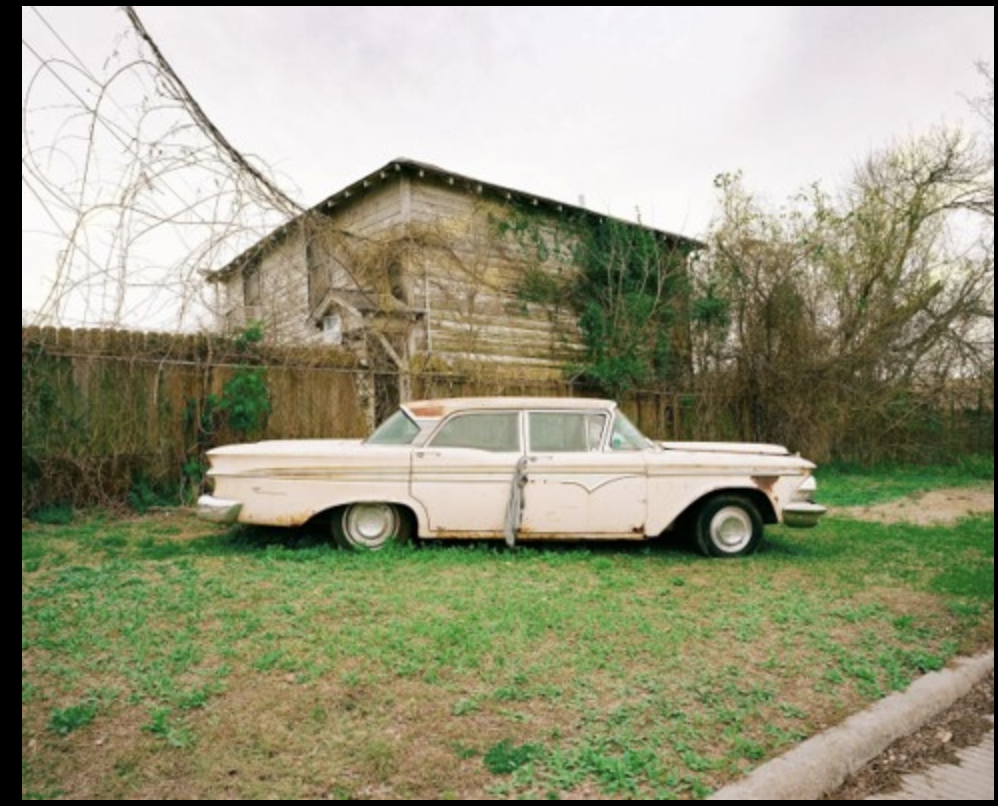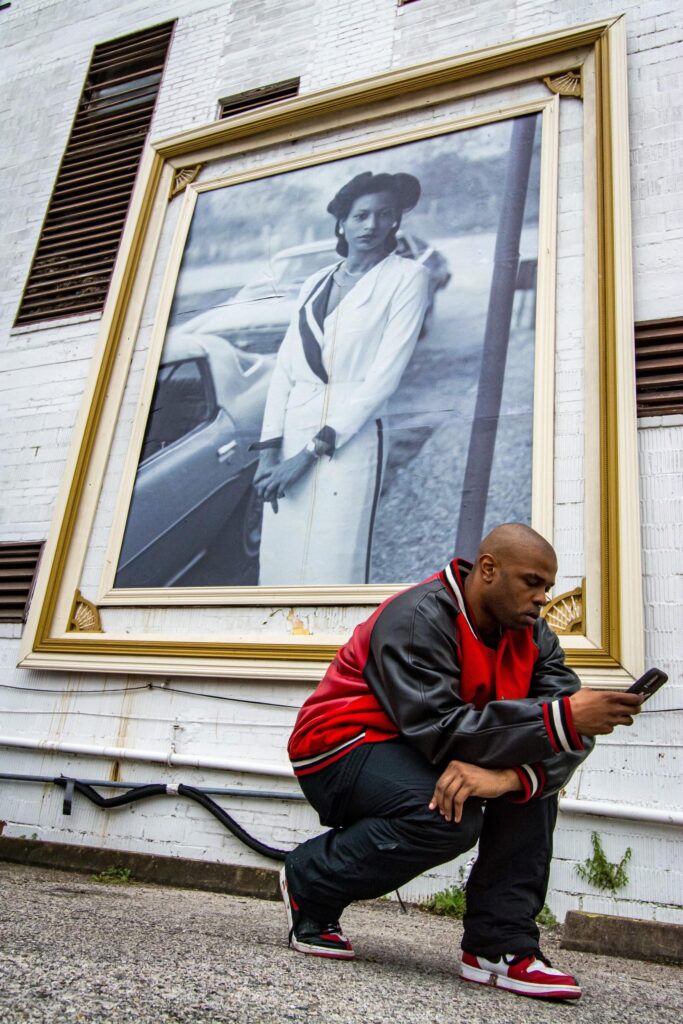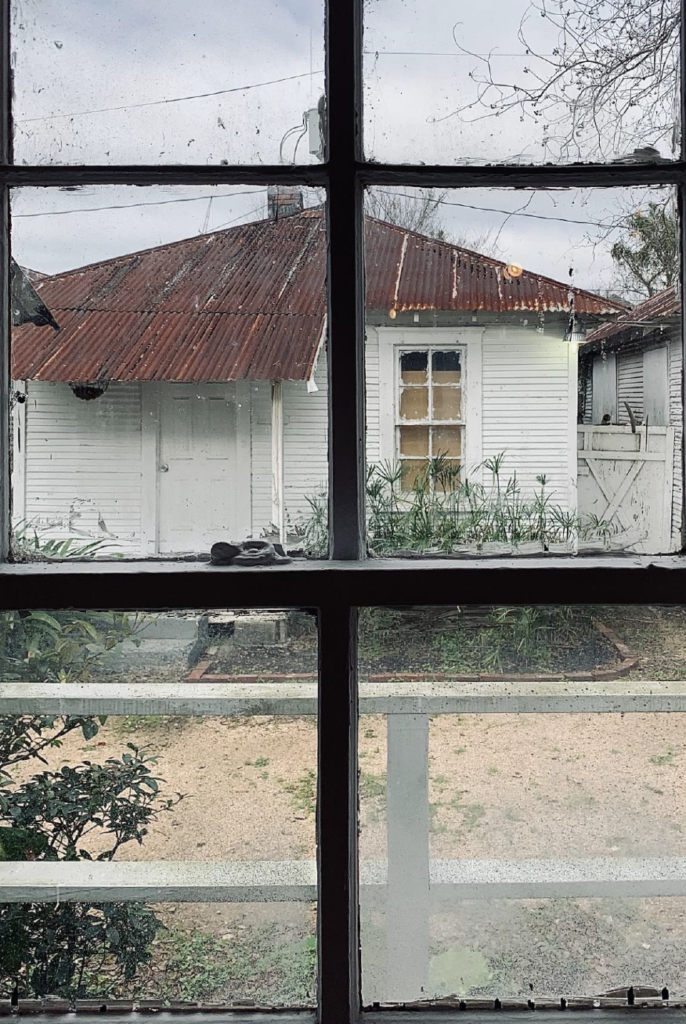By Marie-Theresa Hernández and Naomi Mitchell Carrier

The objects you find in Third Ward show you everything you’re willing to see. You look at this car, and what do you see? I see time. The time before the transition. A car that is the 1960s equivalent of a Mercedes today. The Civil Rights Movement is when the transition happened. With the end of segregation, Houston was open to everyone and people in the Third Ward began to leave. A community that flourished because of the wealth that was growing, was now left in the weeds. This car represented a time to wealth in Third Ward, and now it symbolizes the community. Still in tack, still beautiful, still in progress— just a little beaten up. Jailinne Rodriguez.
Carroll Parrott Blue’s Dawn at My Back begins a chapter on Houston with the lyrics from L. E. Campbell’s “In the Upper Room.” His lyrics come to mind, recalling trips to Third Ward in the spring of 2020 as the coronavirus pandemic hurled towards us: “It is there I feel the spirit.”1 Third Ward blossomed with the establishment of Emancipation Park in 1872, which came as a respite for Black families in a city that barred them from many public spaces. The park, located at the intersection of East Broadway (later Dowling and now Emancipation Avenue) and Elgin Street, was created on land purchased by formerly enslaved Houstonians, who built homes surrounding the park. Shortly after World War II, Third Ward began chang-ing when returning service members, with the GI Bill’s support, established businesses and built homes, trans-forming it into a middle-class community. Within a few years over 140 businesses lined its main streets, but it was short-lived.

Walking through Emancipation Park I saw this beautiful lady from afar. Her husband took this photo of her but was prevented from becoming the artist he wanted to be due to the demands of having a family. Their son had the freedom to become an artist and did so. When the son was given the chance to install his art on this wall, he instead chose to install his father’s photograph of his elegant mother as a tribute to both of them. It is truly a lovely story. UH student Joshua Burrell poses in front of the mural creating a juxtaposition of the old and the new. Americo Avila.
When desegregation took hold in the 1960s, stores across the city opened their doors to Black shoppers, and Black home buyers purchased houses in previously restricted neighborhoods. Residents began to move out of Third Ward and took their business with them – a right for which they had fought for over a century. The advent of the civil rights movement brought added tension and chaos to the neighborhood, reaching a crisis when community organizer Carl Hampton was killed by police across the street from Emancipation Park in 1970.[ Black power movements such as those created by Hampton produced a backlash. Amidst the tension and violence, Third Ward began wasting away, and the city did little to stop its collapse.
Students in the Visual Stories: Local and the Global class taught by University of Houston (UH) professor Dr. Marie Theresa Hernández in the World Cultures and Literature Program produced a series of photographs of Third Ward to convey the profound sense of identity it provided to those connected to its history. Fortunately they made several field trips to Third Ward and amassed scores of photos before the COVID-19 shut down occurred in March of 2020.

This photo was taken at Project Row Houses and is unique because the back window is facing the front of another house. Diamond Johnson.
During their visits, the students found the past remained embedded in the present, with traces of Third Ward’s grandeur enduring amidst the pace of overwhelming gentrification. The new millennium has brought the interest of developers. “Skinny houses,” as UH student Chris Ferreira described the tall townhomes, are rapidly multiplying throughout Third Ward. His classmate, Octavia Williams, writes of the feelings she experienced as she wandered through the neighborhood: “Yesterday felt good, yesterday isn’t today.” Third Ward now finds itself caught between the tall houses and the old houses. Nevertheless, the people who understand the history still feel the spirit and mourn its loss.
Click here to read the pdf of the full article, or click on Buy Magazines to purchase a print copy or subscribe.

Check out other Houston History articles about Third Ward, including a tour of popular historic spots around the neighborhood and the origins of Emancipation Park.

 Follow
Follow